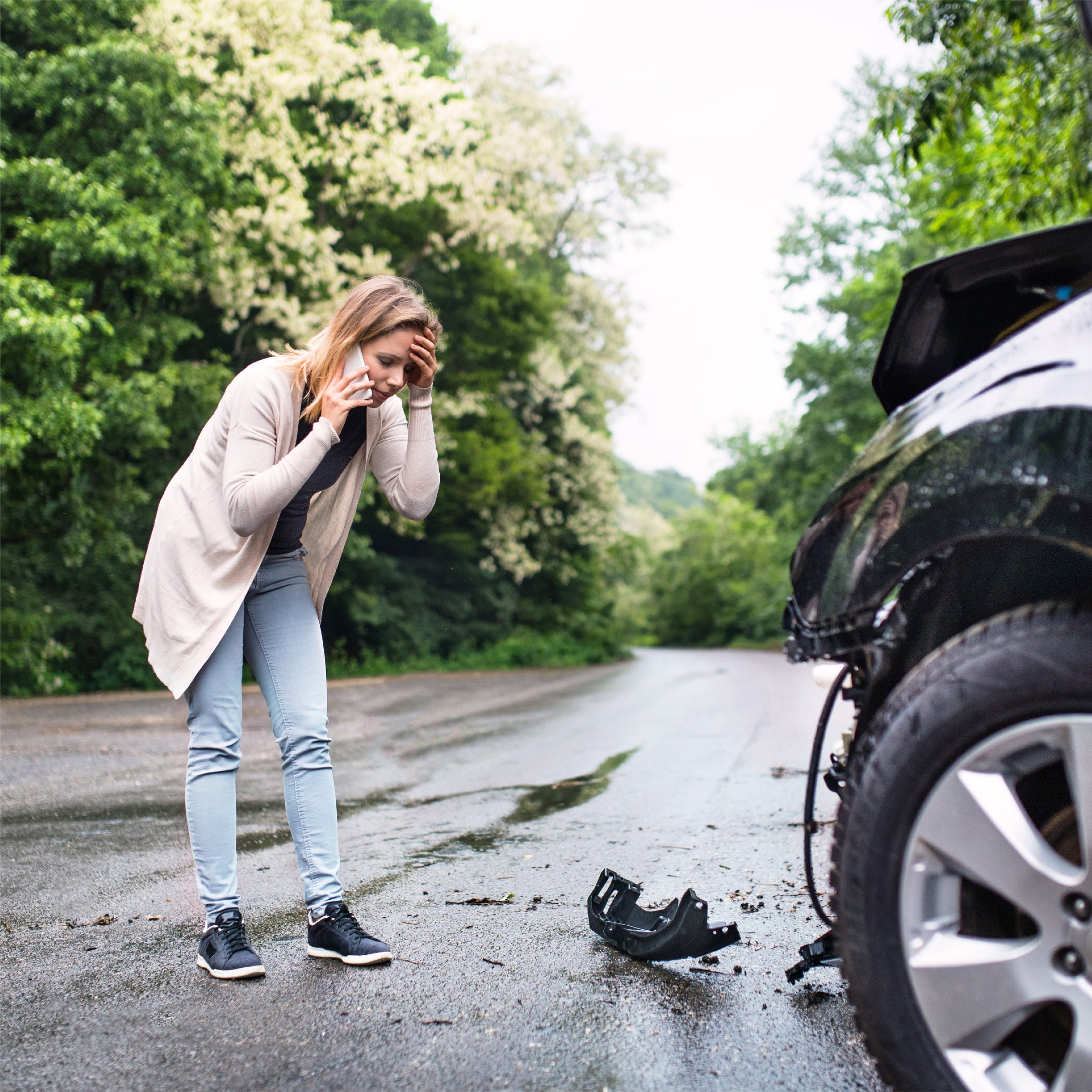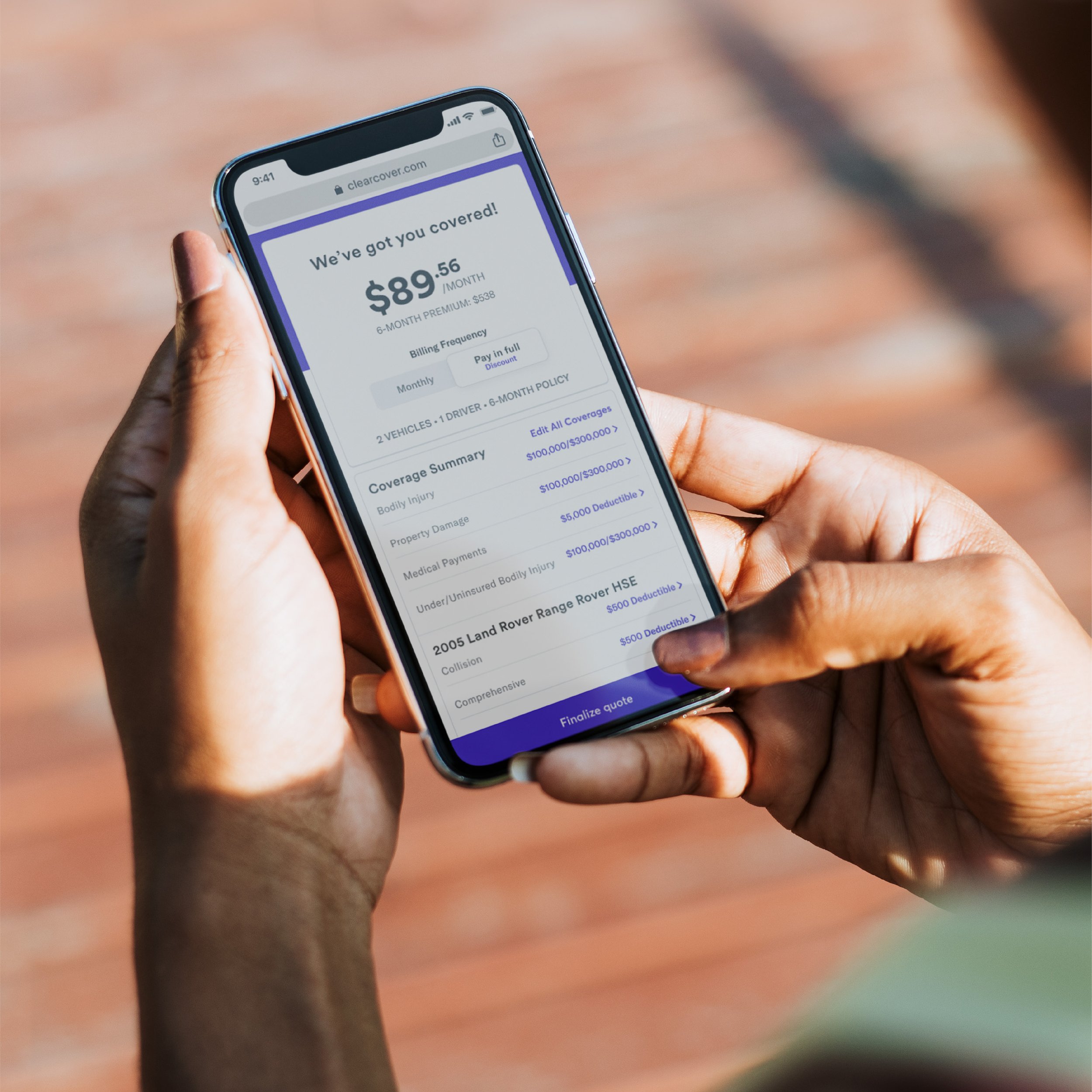Rideshare Insurance: How It Works & What Is Covered
Written by Team Clearcover
The ridesharing industry has boomed in recent years and is predicted to continue doing so through 2025. Currently, about 25% of the US population uses a ridesharing service at least once a month. At this point, we can confidently say that Uber, Lyft, and other ridesharing platforms are here to stay.
But who covers those vehicles when they get in a collision? Or the injuries sustained by drivers and passengers? Does the driver’s personal insurance step in, or do Uber, Lyft, or other companies provide insurance? Does the rider’s insurance ever get involved?
Whether you drive for a ridesharing company or catch a ride with one from time to time, it’s helpful to know how rideshare insurance works.
How Does Rideshare Insurance Work?
Rideshare insurance is unique from other types of auto insurance because it fills the coverage gaps of someone who frequently moves back and forth between driving for personal and business use.
Let’s quickly differentiate two of the insurance policies that will come up as we discuss rideshare insurance. The first is coverage provided by a ridesharing company. This type of insurance is purchased by ridesharing companies (like Uber or Lyft) to cover their drivers. That’s exactly how we’ll refer to it: “coverage provided by a ridesharing company.”
The second is rideshare insurance purchased by the driver. This covers the driver and their vehicle for certain, defined periods of time when the rideshare app is on during a very specific period of service (which we will cover below).
If you drive for a ridesharing platform and need ridesharing insurance, the most popular approach is to get this coverage through an endorsement on your personal auto insurance policy.
Broadly speaking, there are two main categories of car insurance: personal car insurance and commercial vehicle insurance.
Personal auto insurance is exactly what it sounds like: insurance purchased by private individuals to cover the vehicles they use in their everyday lives. Personal auto insurance is the coverage most people are familiar with. Generally, it is the correct kind of car insurance for the typical driver to purchase for their vehicle—as long as that vehicle isn’t owned by a business or used to make money.
And if the vehicle is used to make money? That’s where the other kind of insurance, commercial vehicle coverage, comes into play. Commercial vehicle coverage is the insurance purchased by taxi and delivery companies to cover the vehicles they use to bring in the majority of their income. Commercial coverage is intended to ensure vehicles that travel a lot of miles and, therefore, it tends to be significantly more expensive than personal coverage.
So, which kind of car insurance applies to rideshare vehicles? You can probably see the challenge already: neither personal auto insurance nor commercial vehicle coverage quite work perfectly for a ridesharing coverage situation.
The problem is that a rideshare driver switches back and forth between being a personal driver and a commercial driver—sometimes switching categories many times over the course of a single day—and no single kind of auto insurance applies to both situations.
So, if you drive for a ridesharing company, how do all of these changes in the use of your vehicle affect your coverage?
Before you start driving with a rideshare or delivery company it’s recommended that you reach out to your personal auto insurance company to understand your coverages and what a Ridesharing Endorsement would cover. (We’ll get into that in more detail.)
What Are Driving Periods?
Driving periods are the different stages of driving for a ridesharing company. Here’s a quick rundown of the different driving periods and which type of auto insurance covers you during each:
Period 0
You’re driving for personal reasons. You’re not accepting passengers, and the rideshare app is turned off. In this case, you’re a private driver driving a personal vehicle. Your personal auto policy applies here. Simple.
Period 1
Time to start earning! You drive downtown, turn on your app to declare your availability, and...boom—you’re a commercial driver now! At this point, you are no longer covered by personal auto insurance. If you get into an accident during Period 1—even if it’s only three seconds after you turn on your app—your personal auto insurance will not cover the accident.
If you think that your ridesharing company’s insurance policy covers you during this time, you’re right—kind of. But here’s the thing: Uber, Lyft and most other ridesharing platforms only provide basic liability insurance for Period 1, meaning that if you get into an accident while waiting for a ride request, the coverage provided by your ridesharing company will only cover the damage you cause to other people and their property. This coverage will not pay for the cost of your medical expenses or to repair or replace your car. This is generally how ridesharing apps work, but make sure you check with your rideshare company and read all of your insurance documents closely.
Period 2
Ride request logged! As soon as you accept the ride, you are covered by your ridesharing company’s insurance—both collision and liability.
Period 3
At this point, when you are safely driving your passengers to their destination, your ridesharing company’s insurance is still in full force.
However, as soon as you drop your passengers off and end the ride, you’ll be back to…
Period 1, Again
Just like before, you’re back to only being covered by your ridesharing company’s liability insurance. As long as your app is turned on and accepting customers, your personal auto insurance will not apply.
So, you can see where things get a little tricky.
The switch in coverage from personal auto insurance to commercial vehicle insurance isn’t seamless and can leave you exposed to significant risk.
Okay, So How Do You Cover the Gap in Collision Coverage for Period 1?
The solution is pretty simple in most states: you purchase a Ridesharing Endorsement from your auto insurer. This endorsement will extend your personal auto policy coverage through Period 1, so you won’t be left hanging if you get into an accident while waiting for a ride request. This coverage will immediately stop as soon as a ride request is accepted. Also, if your personal liability insurance has higher limits than the basic coverage that your rideshare company provides, a Ridesharing Endorsement will extend that coverage through Period 1 in excess of the coverage provided by the rideshare company. It’s a pretty easy and relatively inexpensive way to get some peace of mind.
What if a Ridesharing Endorsement isn’t available in your area? Ask your insurer about options and know that some places require drivers to get a commercial policy for their rideshare vehicle. While it may be more expensive, it probably won’t be nearly as expensive as purchasing a new car.
Do Delivery App Drivers Need Rideshare Insurance?
If you use your personal vehicle to deliver food or other goods for a company like DoorDash, UberEats, or any parcel delivery service, you might be wondering if you need a Rideshare Endorsement. As with ridesharing, the trips during a delivery run are broken down into periods.
Here’s how it breaks down:
Period 0
You’re not logged into the app and are not available to receive delivery requests. Your personal coverage has your back.
Period 1
You’re logged into the app but haven’t accepted a delivery request yet. Your personal policy will not extend coverage without a Rideshare Endorsement. However, some delivery apps may offer some level of coverage.
Note: Clearcover’s Rideshare Endorsement does not cover delivery or delivery apps at this time. We recommend you check with your insurance provider to understand what is included in your Rideshare Endorsement.
Period 2
You’ve accepted a delivery request and are on your way to pick up the goods. Most delivery apps will typically offer some level of coverage in this period, but you should always check with your delivery employer to make sure you understand your coverage.
Period 3
You have the goods and are on your way to deliver them. The delivery app will provide commercial insurance coverage for the duration of the delivery. Once you’ve made your delivery, you are automatically back to Period 1.
As you can see, there’s a big gap in coverage between Period 1 and Period 2. That’s why it’s important to have a Rideshare Endorsement on your personal policy or a commercial policy that will cover you during the uncovered stages of the delivery process.
Traditional Delivery Drivers
We’ve discussed rideshare services and delivery apps, but there are other methods and modes of delivery to consider as well.
If you make deliveries for a company like Amazon, UPS, or FedEx and you drive a company vehicle, your company will likely provide commercial insurance coverage. However, if you are driving your own vehicle, it is well worth speaking with your employer to ensure clarity on what kind of coverage they extend and what insurance you may be responsible for obtaining.
In today’s fast-paced, tech-driven world, we’re constantly moving through uncharted territory. And when ridesharing services came along, insurance for rideshare drivers definitely fell into that category. Fortunately, most companies today that are putting people and goods on the road are taking the time to inform drivers of their insurance benefits and requirements.
Contact Clearcover Today for More Information on Rideshare Insurance
So, the main takeaway when it comes to ridesharing insurance: If you drive for a ridesharing or delivery app, contact your employer to determine exactly what type of coverage you have and when it kicks in. You’ll likely find coverage gaps that can be solved with an affordable and easy Rideshare Endorsement that you can add to your existing personal auto policy.
If you’re a rideshare or delivery driver, let Clearcover bring you peace of mind knowing that you’re covered when you need it most. Get your free, no-obligation quote today!





